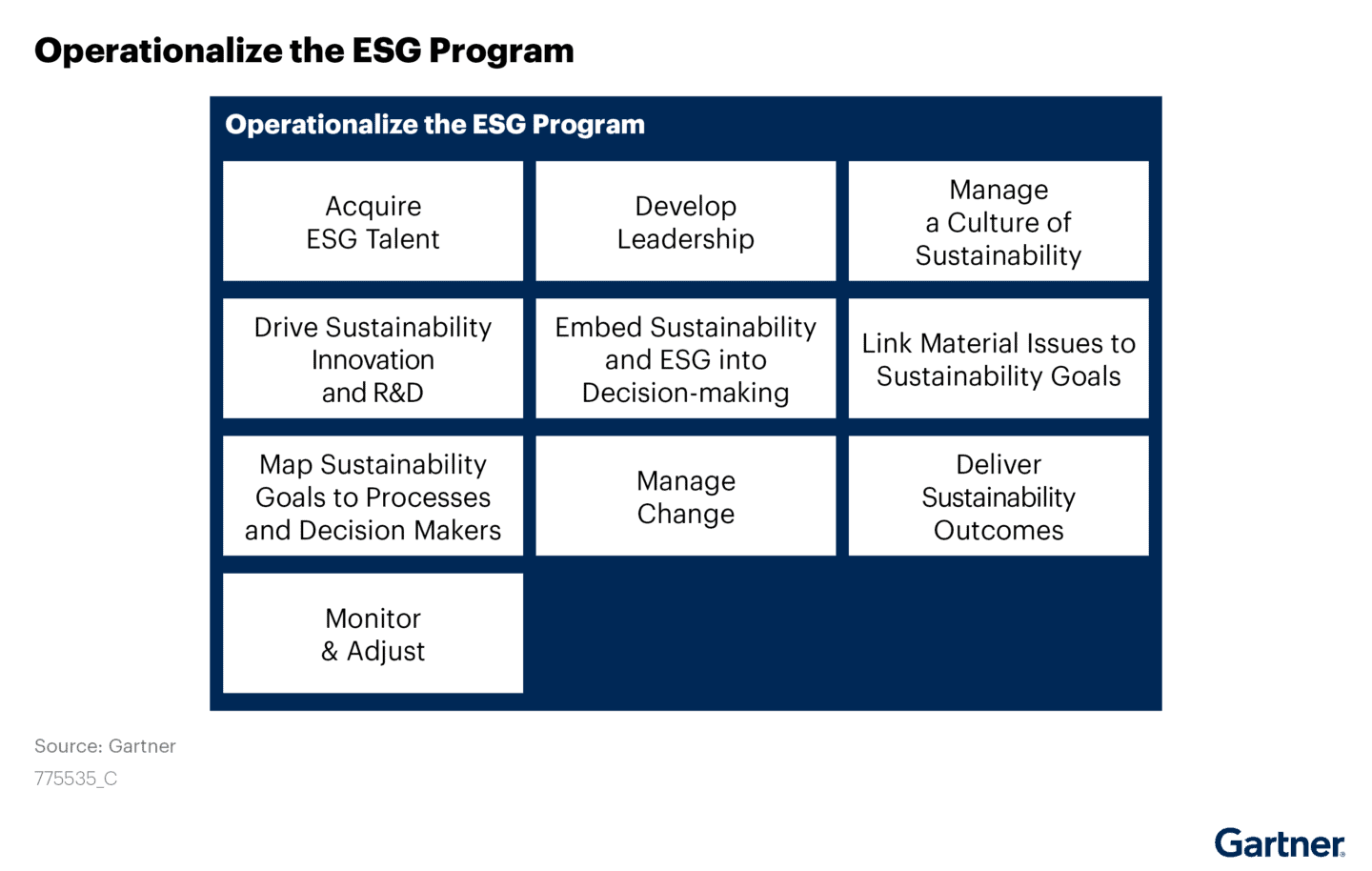With the new workplace now operating to a hybrid agenda, organizations have broadened their ideas about the levers that drive success and revenue.
Many have now set a long-term goal of accelerating an era of sustainable and inclusive growth. The most forward-thinking now view growth, sustainability and inclusion as mutually reinforcing, forming a virtuous circle that drives innovation while reducing environmental impact.
This chimes well with the prevailing sentiment among the demanding modern-day workforce. Younger workers in particular (Gen Z and millennials) view their future lives, growth and livelihood as deeply connected with sustainability and inclusiveness, and require their employers to meet their standards.
As a result, ESG – environmental, sustainability and governance – is now one of the most critical factors on the workplace agenda.
What Do the Elements of ESG Mean?
Environmental addresses impact on the physical environment and defines the risk of a company and its suppliers/partners from climate events. Examples include:
- Climate change and greenhouse- gas emissions (GHG)
- Air pollution (non-GHG) including optimized workplace with optimum energy efficiency
- Water and wastewater management
- Waste and hazardous-materials management; circularity.
Social addresses social impact and associated risk from societal actions, employees, customers and the communities where a company operates. Examples include:
- Labor practices
- Health and safety
- Community engagement; diversity and inclusion
- Community relations, local economic contribution
- Product and service attributes.
Governance assesses the timing and quality of decision making, governance structure and the distribution of rights and responsibilities across stakeholder groups, to provide a positive social impact and mitigate risk. Examples include:
- Business ethics, data security
- Capital allocations, supply chain management
- Governance structure and engagement; incentives
- Policies; external disclosures; position and advocacy
What Does ESG Look Like in Today’s Workplace?
New client service platforms are supporting the ambitions of organizations to cut carbon emissions by half by 2030 and achieve net zero by 2050.
In the United States, the Securities and Exchange Commission (SEC) is considering new rules for more detailed disclosure of climate-related risks and greenhouse gas emissions. In a number of jurisdictions, reporting ESG elements is either mandatory or under active consideration.
How Does ESG Drive the Workplace Agenda?
A recent McKinsey report states that investment in ESG is helping companies identify opportunities and take action in areas including helping leaders and organizations create and implement ambitious ESG and net-zero strategies.
The report finds that a successful attitude to ESG is growing new sustainable businesses and providing insights on guiding capital to areas of high potential.
It is helping organizations find and remove emissions across systems, including product design, supply chain, manufacturing, and operations. In addition, banks, asset managers and insurers have reported that ESG is aiding in decarbonizing their portfolios.
How Does Technology and AI Help Organizations Achieve ESG targets?
A successful ESG strategy depends on good reporting and data. ESG management tools consolidate key metrics in one place so they can be analysed, targets set, plans made and appropriate actions taken.
AI has a valuable and increasing role to play in driving insights, benchmarking the key metrics and refining data quality so short- and long-term targets can be tracked.
At operational level, workspace management technology is helping to create efficient, carbon-reduced workplaces that are attractive to employees. This includes desk and room scheduling apps that support hybrid working, sensors that help maximize space utilization and integration with building management solutions so heating, lighting and ventilation are used to best effect.
Your 5-step Plan to Developing and Implementing Your ESG Agenda
- Think blue sky – what do you want to achieve with ESG?
- Assess your current position with the help of technology – capture and analyze data
- Evaluate the investment you will need to make, and the return you would expect. Don’t forget to include benefits such as better talent retention and improved RTO (return to office).
- Decide if this is doable, or whether you need to revise
- Put in place the technologies that will help you achieve your goals.
This diagram from Gartner offers a great model to emulate:

Conclusion
The elements of ESG used to have a bad rep in business. People said their benefits – if there even were any – were hard to quantify, and did not correlate to financial success.
We now know better, of course. In the new hybrid workplace, environmental considerations are high, while the need to create conditions where employees thrive has also pushed social and governance elements far up the agenda. Lip service to ESG is well and truly over.
Companies can conduct operations in a seemingly rational way, aspire to deliver returns quarter to quarter, and determine their strategy over a span of five or more years. But if they forget to take account of externalities in their base case, or allow the social licence to be eroded, their forecast and indeed, their core strategies may not be achievable at all.
The only way for organizations to sustain long-term value is by managing huge, paradigm-shifting external factors. And good ESG strategy, with key metrics monitored and insights acted upon, is quite simply the most practical way to achieve this difficult task.
Contact us today to discover how our integrated workplace experience applications can streamline your operation.





